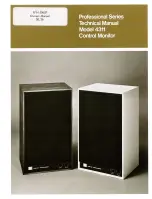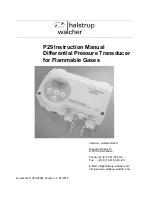
FT146
•
20
❒
8. Move your meter probe over to TP2, key the transmitter and adjust L5
and L11 for maximum negative reading. Once again, go back and forth
between the two coils. You should get a reading of at least -120 mV. It is
very important to tune for the best peak as this will ensure proper
transmitter operation.
❒
9. You should now be able to see RF power at the output antenna jack,
J1. Adjust capacitor C12 for maximum RF power output.
❒
10. Slightly spread or compress coils L3 and L4 to maximize output power.
Power should be at least 4 watts with a 12 volt power source.
❒
11. While speaking into the microphone, slowly rotate modulation control
R13 clockwise for best sounding modulation. Ideally, a two-way radio
service monitor should be used to adjust this control.
❒
12. If a frequency counter or service monitor is available, adjust capacitor
C43 for exactly 146.520 MHz. If you do not have such equipment, use a
receiver with a center tune meter.
This completes the alignment of your FT146. The PC board should be mounted
into a protective enclosure to guard against accidental contact. The Ramsey
CFT case set provides an ideal, perfectly sized and matched case for your
FT146. Study the following sections regarding the DC power supply and RF
power indication, and operate your transmitter in accord with good amateur
radio practice.
YOUR POWER SUPPLY AND RF OUTPUT POWER
For optimum performance, one or two volts of extra DC supply power can make
quite a difference in any transmitter. For example, two lantern batteries in
series, or 8 "D cells" will obviously provide "about 12 volts" with sufficient
current capability for casual operating. For maximum RF output power, use a
supply of 13 to 14 volts DC. The easiest method is to place two fresh "D cells"
in series with your power source, if a full 13.6-15 volts DC is not available. A
word of caution concerning wall plug style AC adapter power supplies: They are
not suitable for operation of your transmitter due to their poor regulation, AC
ripple content and RFI suseptibility.
If your supply voltage is in the 11-12 volt range, you can expect a 600 to 800
ma current flow and about 4 watts of the RF output power. With a solid 13 to 14
volt supply, you can expect about 1 amp current draw and up to 5 or 6 watts of
RF output power.
VERIFYING TRANSMITTER RF OUTPUT
The most important thing to know is whether your transmitter is delivering some
measurable and reassuring level of RF power to the antenna. The sound of the









































